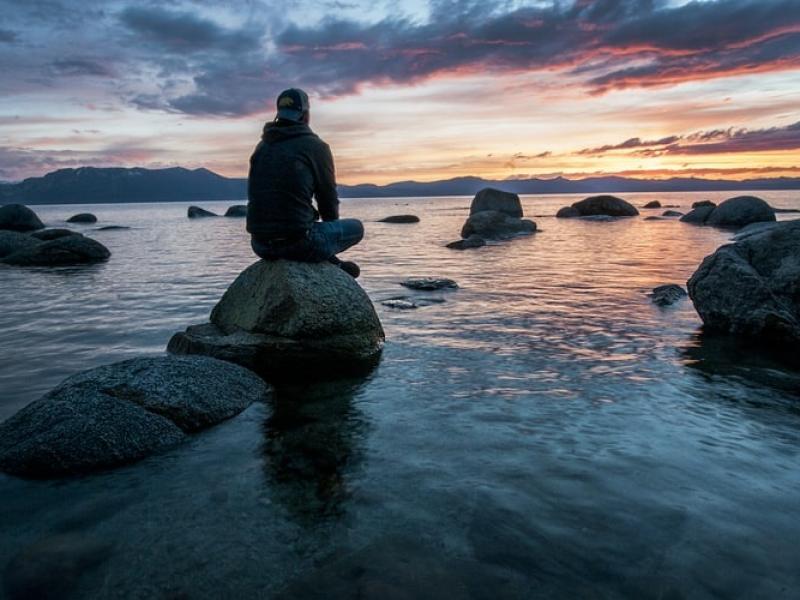Solitude and Loneliness – art and the polarities of being alone
There is a vast difference between solitude and loneliness. It could be argued that they are two ends of a spectrum. The former being a type of chosen exile, a peaceful time away from noise and responsibilities and chatter, while the latter is a kind of suffering, a yearning for something other than the current situation.
For centuries, probably since the beginning of existence, humans have always craved times of solitude and, at the same time, avoided loneliness as though it were an affliction worse than death. There is a craving for one and a fear of the other.
How can two states of being that appear similar in so many ways elicit different emotional responses? It is a curious thing that you could look at two people sitting alone. Both are is staring out to sea, for example. However, one is experiencing utter solitude and calm, while the other is lonely and filled with longing. The difference is internal, not external. You can’t easily discern its presence.
Many great writers and thinkers, those who seem to desire solitude most of all, have time and time again explored these themes and the feelings which accompany them through their works.
In Moby Dick, Herman Melville wrote “I am tormented with an everlasting itch for things remote. I love to sail forbidden seas…”
This “itch” for solitude is universal. It’s like a craving for time and space to just be, to close the door and be alone with your thoughts, to read a chapter uninterrupted, or take a solo walk and let your senses bring in the full experience of the natural world. Melville goes on to capture a pleasurable moment of solitude as it unfurls gradually:
“As I sat there in that now lonely room; the fire burning low, in that mild stage when, after its first intensity has warmed the air, it then only glows to be looked at; the evening shades and phantoms gathering around the casements, and peering in upon us silent, solitary twain; the storm booming without in solemn swells; I began to be sensible of strange feelings. I felt a melting in me. No more my splintered heart and maddened hand were turned against the wolfish world.”
This passage provides a soothing depiction of solitude, colouring that moment of ‘setting down’ life’s stresses and allowing the world around to sit uninterrupted. Ishmael begins to notice more and more details, and a richness comes over him as the scene fills in.
Olivia Laing wrote a stunning and heart-breaking book on loneliness. In The Lonely City – Adventures in the Art of Being Alone she explores the topic through the eyes of well-known artists Edward Hopper, Andy Warhol, Henry Darger, and David Wojnarowicz, as well as addressing her own feelings of loneliness while living in New York and looking at the wider question of why it’s such a difficult human experience. She describes it as follows:
“Cities can be lonely places, and in admitting this we see that loneliness doesn’t necessarily require physical solitude, but rather an absence or paucity of connection, closeness, kinship: an inability, for one reason or another, to find as much intimacy as is desired.”
She goes on to say that there must be a “richness and value” to this common human experience, that it “might be taking you towards an otherwise unreachable experience of reality”. Perhaps, as we experience different levels and forms of loneliness, it can help to deepen our empathy and, in turn, our feelings of connection to humanity. The sharing of these experiences through art can help make it all the more tolerable.
Laing finishes with the realisation that “loneliness, longing, does not mean one has failed, but simply that one is alive”.
Recommended books with themes of loneliness and solitude:
The Lonely City – Adventures in the Art of Being Alone by Olivia Laing
M Train by Patti Smith
The Catcher in the Rye by J.D. Salinger
Eleanor Oliphant is Completely Fine by Gail Honeyman
Solitude – in Pursuit of a Singular Life in a Crowded World by Michael Harris
How to Be Alone by Sara Maitland
Figuring by Maria Popova
Anam Cara by John O’Donohue
Savage Solitude - Reflections of a Reluctant Loner by Maighread Meadbh
